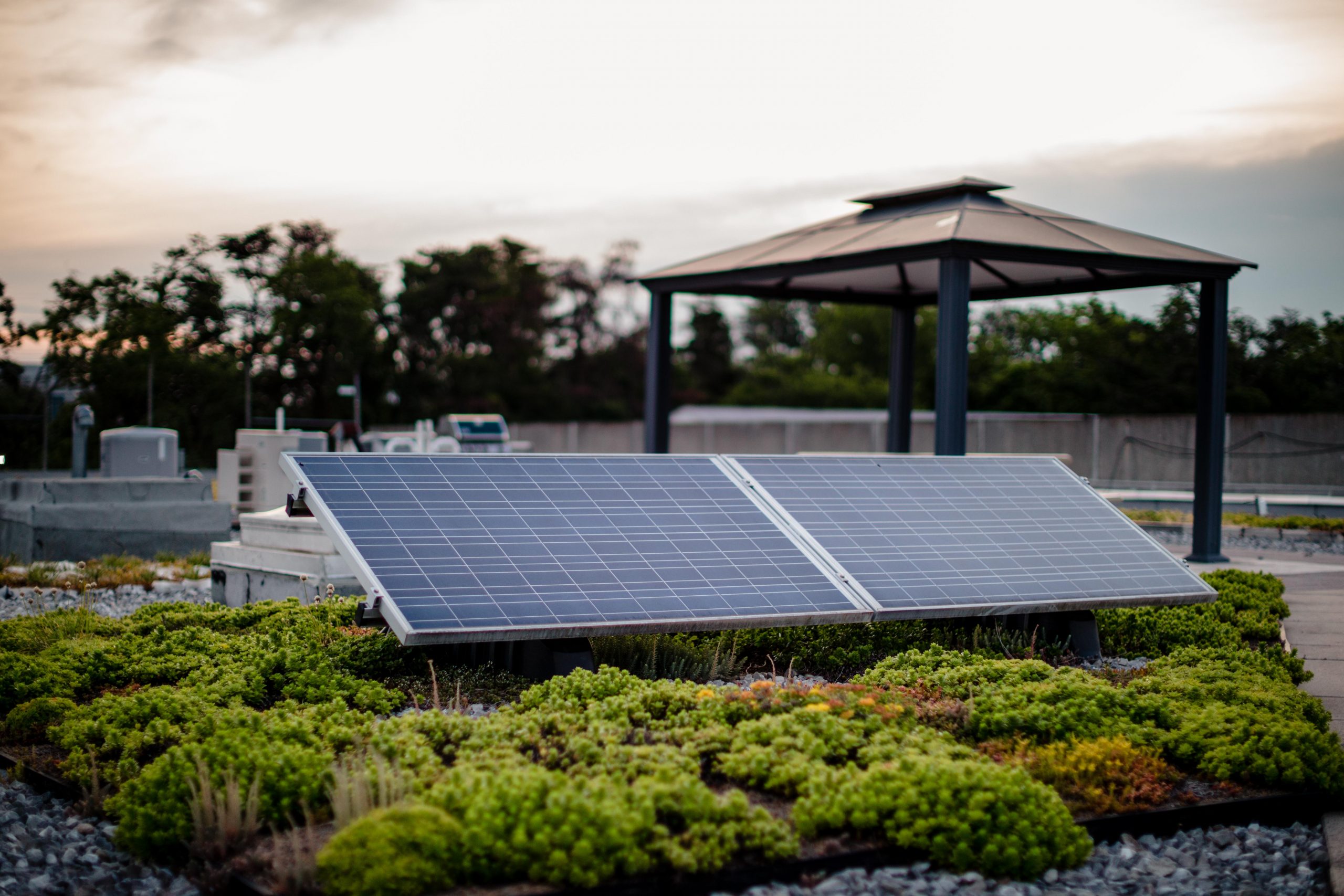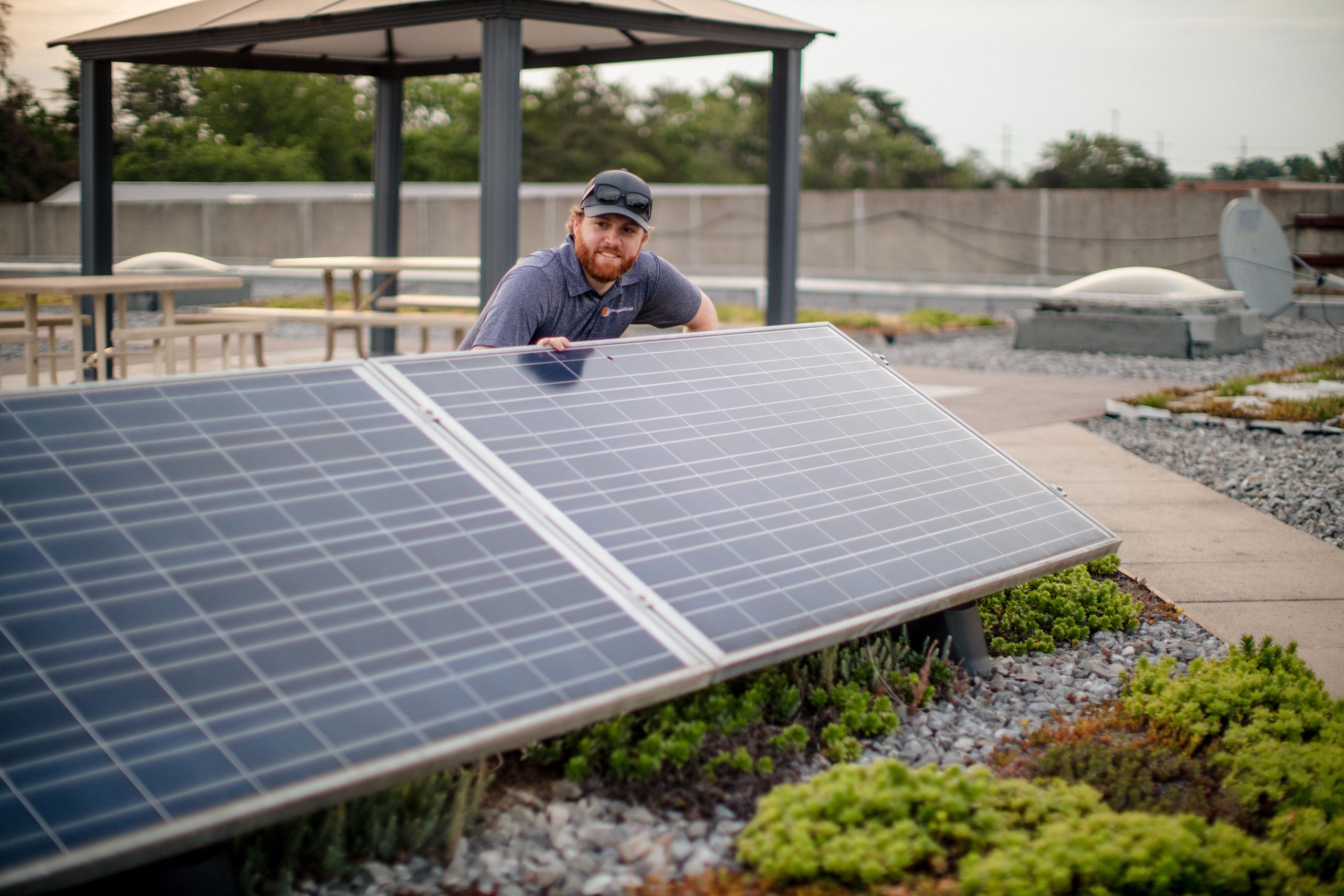
Advantages of Green Roofs and Solar
- Reduced building heat envelopes mitigating Urban “Heat Island” Effect
- Green roofs reduce HVAC billsand allow for solar to increase energy offset
- Vegetative roofs can retain 50-90% of rainfall, avoiding storm water runoff
- Reduces the amount of impervious surfaces in a city
- As natural biofiltration devices, green roofs remove airborne toxins and re-oxygenate air; water retention allows for filtration of pollutants
- Green roofs can reduce the noise levelsof a facility by as much as 40%
- Extended roof lifecan be possible due to moderation of temperature swings
- Warmth from solar panels provides vegetation a longer growing season
- GRIPV systems can increase solar productionby as much as 16%

Our Expertise
Green Roof Construction
Green roofs are typically installed on an Inverted Roof Membrane Assembly (IRMA) roofing system. Sometimes referred to as a Protected Roofing Membrane Assembly, this system places the waterproof membrane directly onto the roof substrate (decking), and then uses a protective foam layer above it to prevent puncture of the waterproofing layer. From here, one of three types of green roof systems is installed:
- Extensive – The most prevalent green roof system utilizing 3-6″ of growing medium. This low-maintenance approach can even be installed on sloping roofs, and is ideal for growing hardy drought, wind, and frost-resistant plants such as sedums, herbs, and grasses.
- Semi-Intensive – Also referred to as shallow-intensive, this system creates roof top lawns and common areas that are ideal for foot-traffic and human interaction. Planted in 6-12″ of growing medium, these rooftop greenways provide a firm construction that handles continual pedestrian interaction.
- Intensive – Intensive green roof systems are the most in-depth vegetative roof system. Sometimes referred to as “urban agriculture,” these systems incorporate 6-36″ of growing medium that can accommodate sod grass, perennial and annual flowers, shrubs, and even small trees. Intensive green roofs require built-in irrigation and additional upkeep. However, the result is a flourishing green rooftop environment full of varied plant species.
